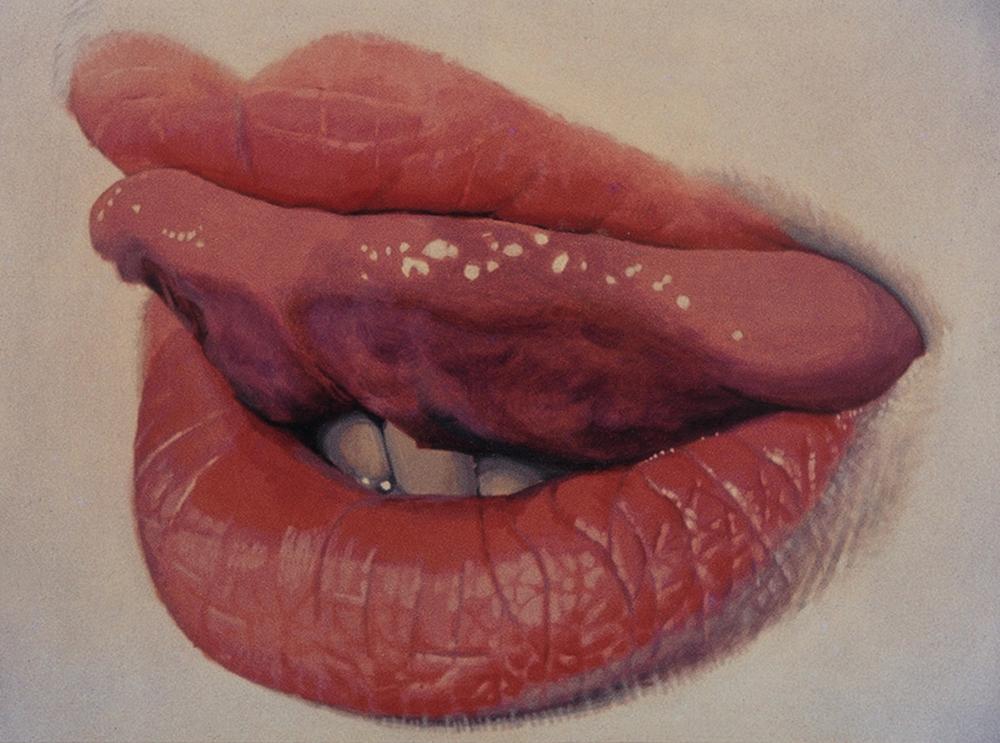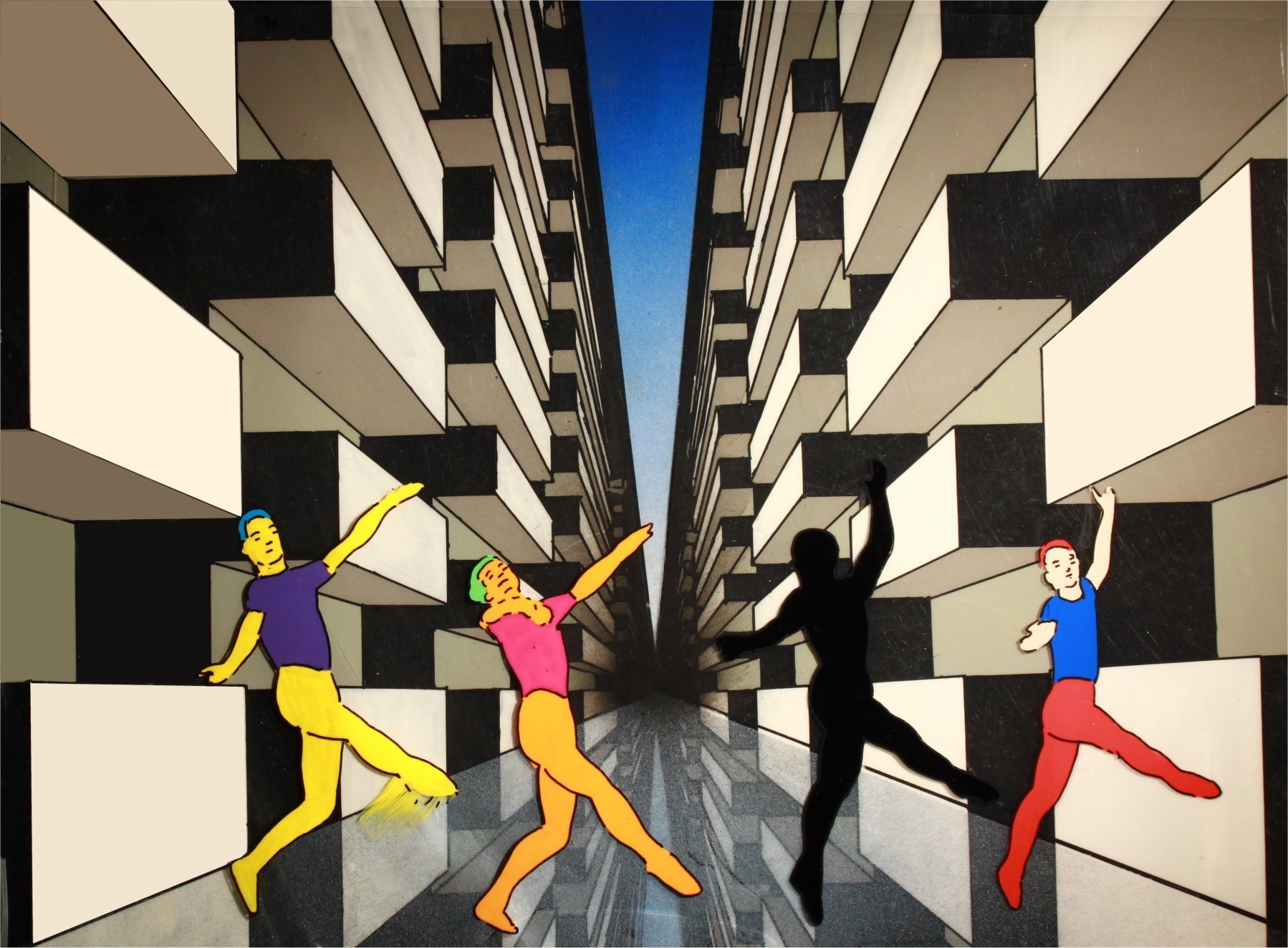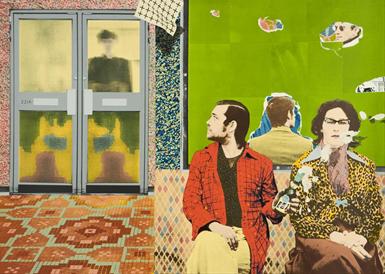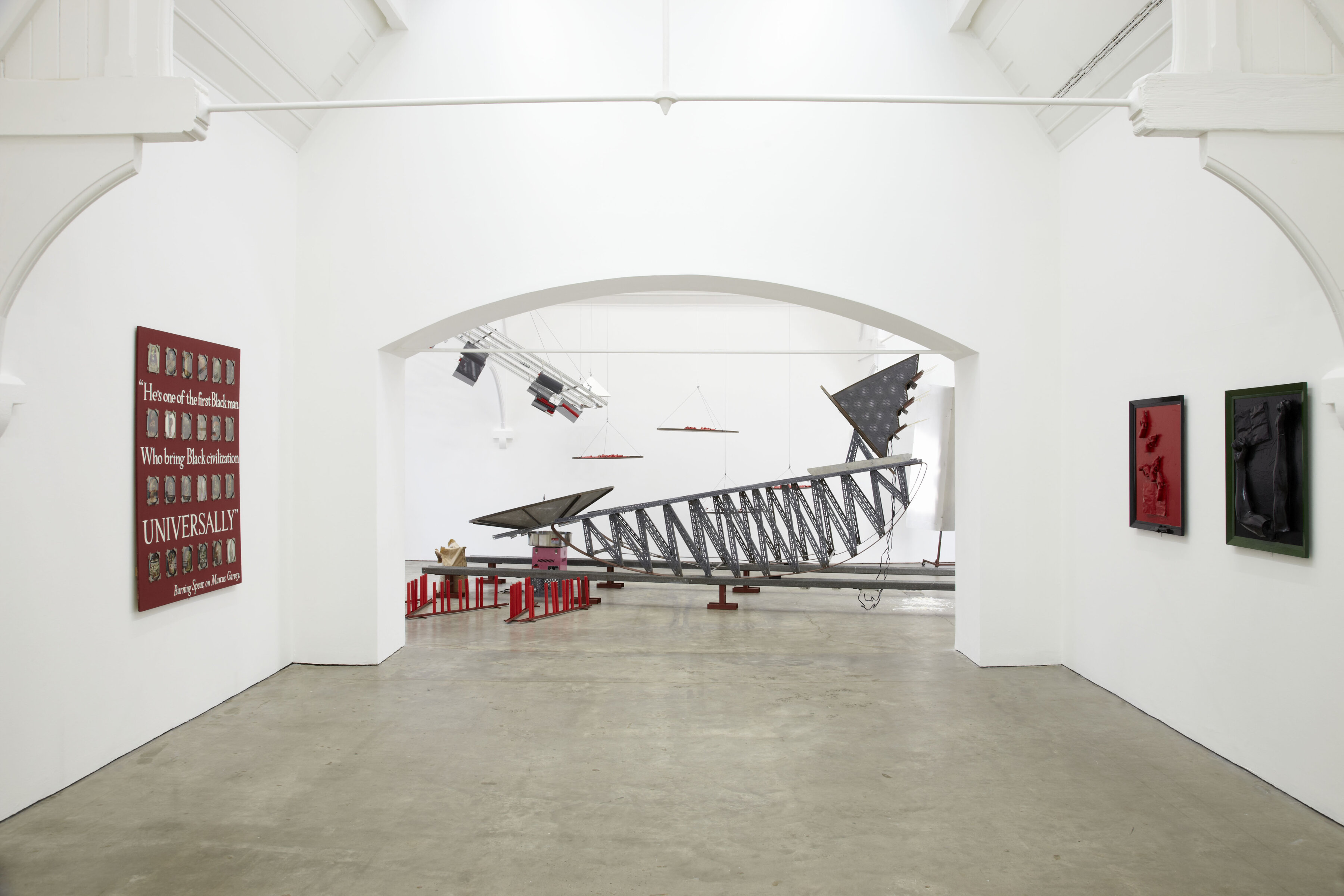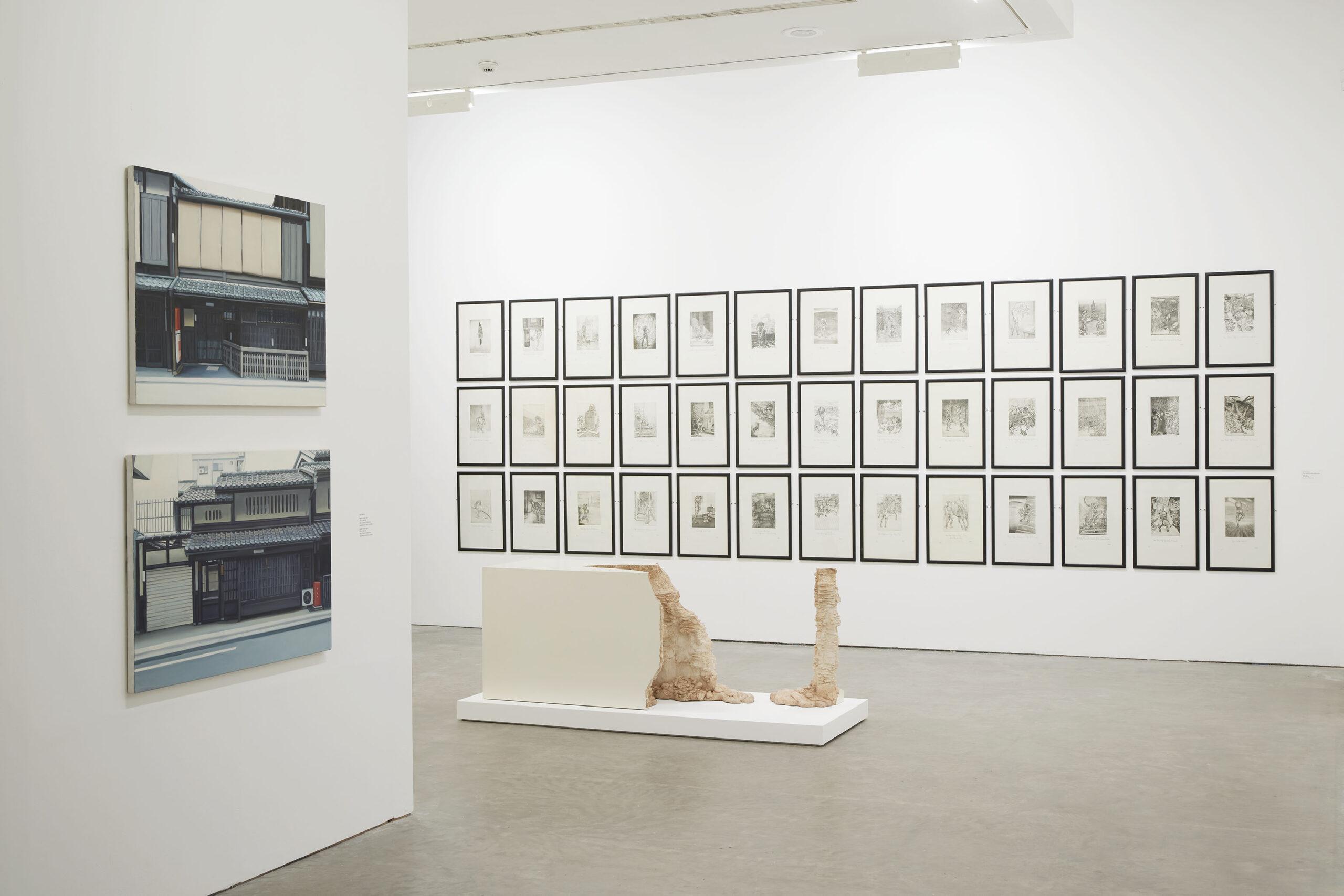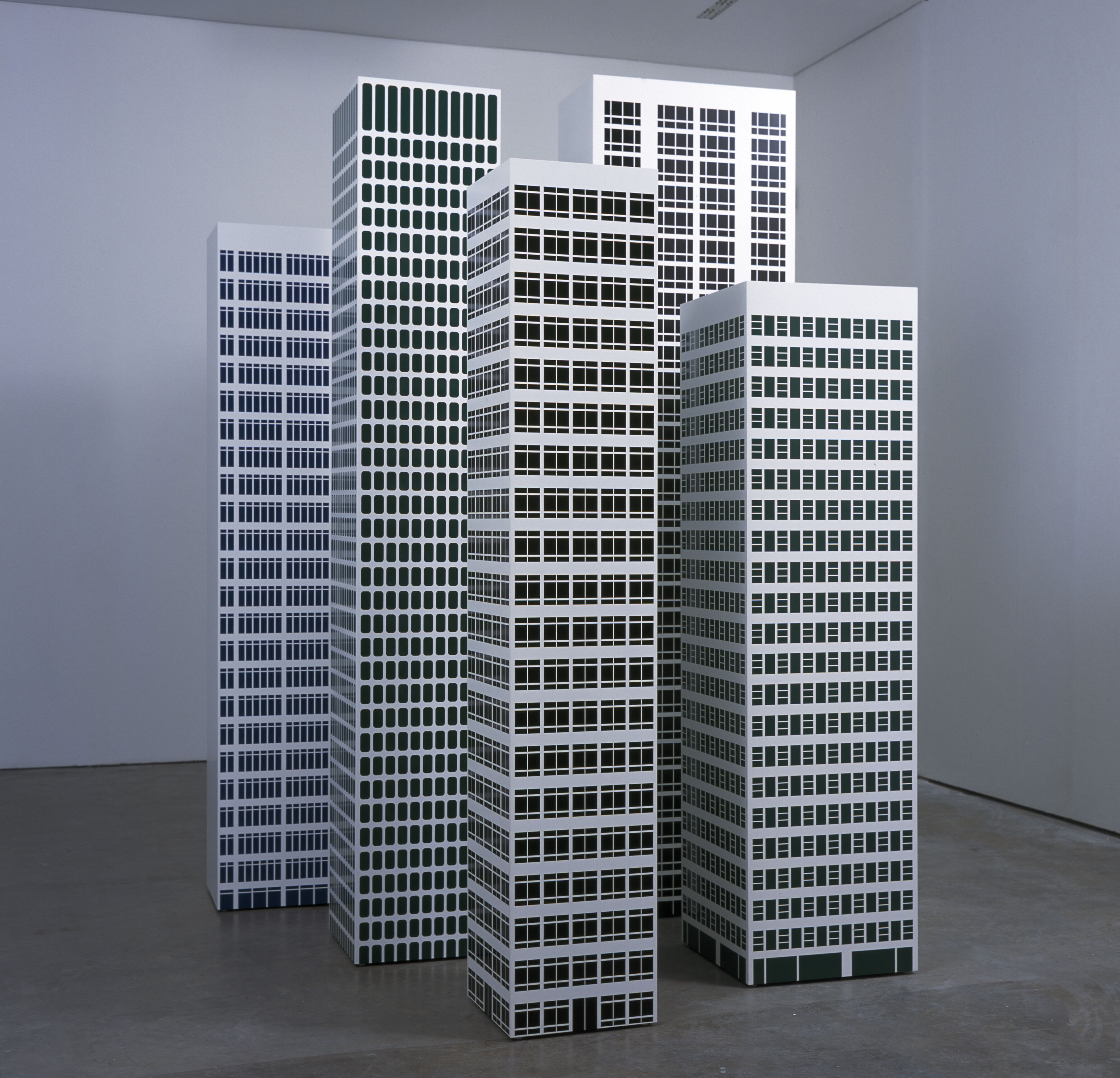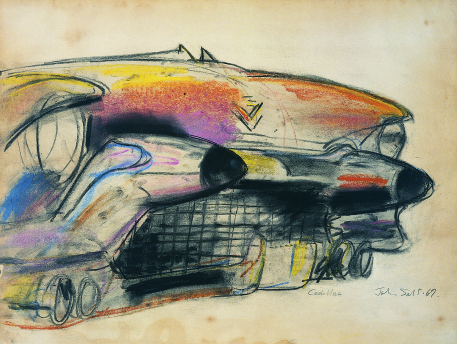
How it all began
In 1964, the artists’ group that founded Ikon published a prospectus that was as clear as it was idealistic. Their aesthetic proposition was neatly summarised:
“Ikon is intended as an antithesis to exclusive art establishments and galleries … [it] has been formed because of the need for an accessible place where the exchange of visual ideas can become a familiar reality.”

A GALLERY WITHOUT WALLS
Ikon was first conceived of as a ‘gallery without walls’, a headquarters for a fluid artistic programme touring to non-art venues. In 1965 it took up residence in an octagonal glass-walled kiosk in Birmingham’s brave new Bullring precinct, adjacent to the landmark Rotunda building.
Supported from the beginning by a modest and visionary couple, Angus and Midge Skene, it challenged a conservative local art world. Taking the idea of an ‘ikon’ as a mobile art object focused towards a local audience.
The four artists officially listed as the founders of Ikon – Jesse Bruton, Robert Groves, Sylvani Merilion and David Prentice – were joined by several others in order to help develop and articulate the original vision. They included Peter Berry, Trevor Denning, Dinah Prentice and John Salt.
FORMER DIRECTORS
Jonathan Watkins
1999 – 2022
Elizabeth Macgregor
1989 – 1999
Antonia Payne
1981 – 1989
Hugh Stoddart
1978 – 1981
Simon Chapman
1972 – 1978
Why Ikon?
We had a meeting at Midge and Angus’ in order to decide on a name for the organisation. We all turned up with suggestions, such as “New Birmingham Gallery” and “Image”.
I was particularly interested in Russian or Greek – eastern orthodox – icons, and thought well “Ikon” is a lovely word. It means image and you get a four letter word that divides beautifully geometrically and was splendid in all directions.
It was appropriate (also) because it suggested moving images … When I mooted it the others said “Oh no, no really, no, not having any of that …” After a few more beers everyone else’s suggestions were shot down and they said “Oh well, I suppose it will have to be Ikon then”.
Robert Groves
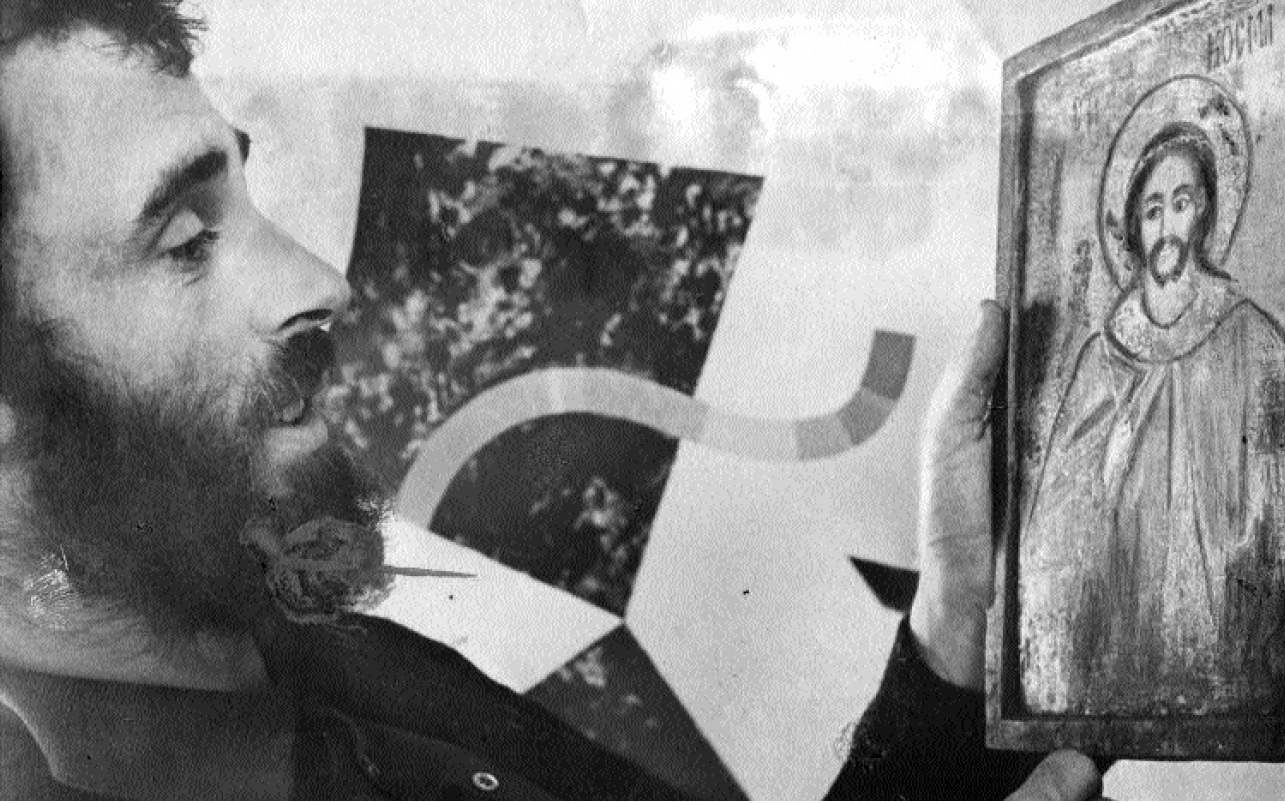
IKON AT 50
This short film, produced for Ikon’s 50th anniversary in 2014, is about Ikon’s development from a small artist-led space in the Bullring in the 1960s to its position as an internationally renowned art gallery at the heart of Birmingham’s cultural scene.
EXHIBITION ARCHIVE
Explore Ikon’s history through our digital archive including a specific series of group exhibitions looking back at Ikon’s artistic programme through the lens of a particular decade, to date the 60s, 70s, 80s and 90s.
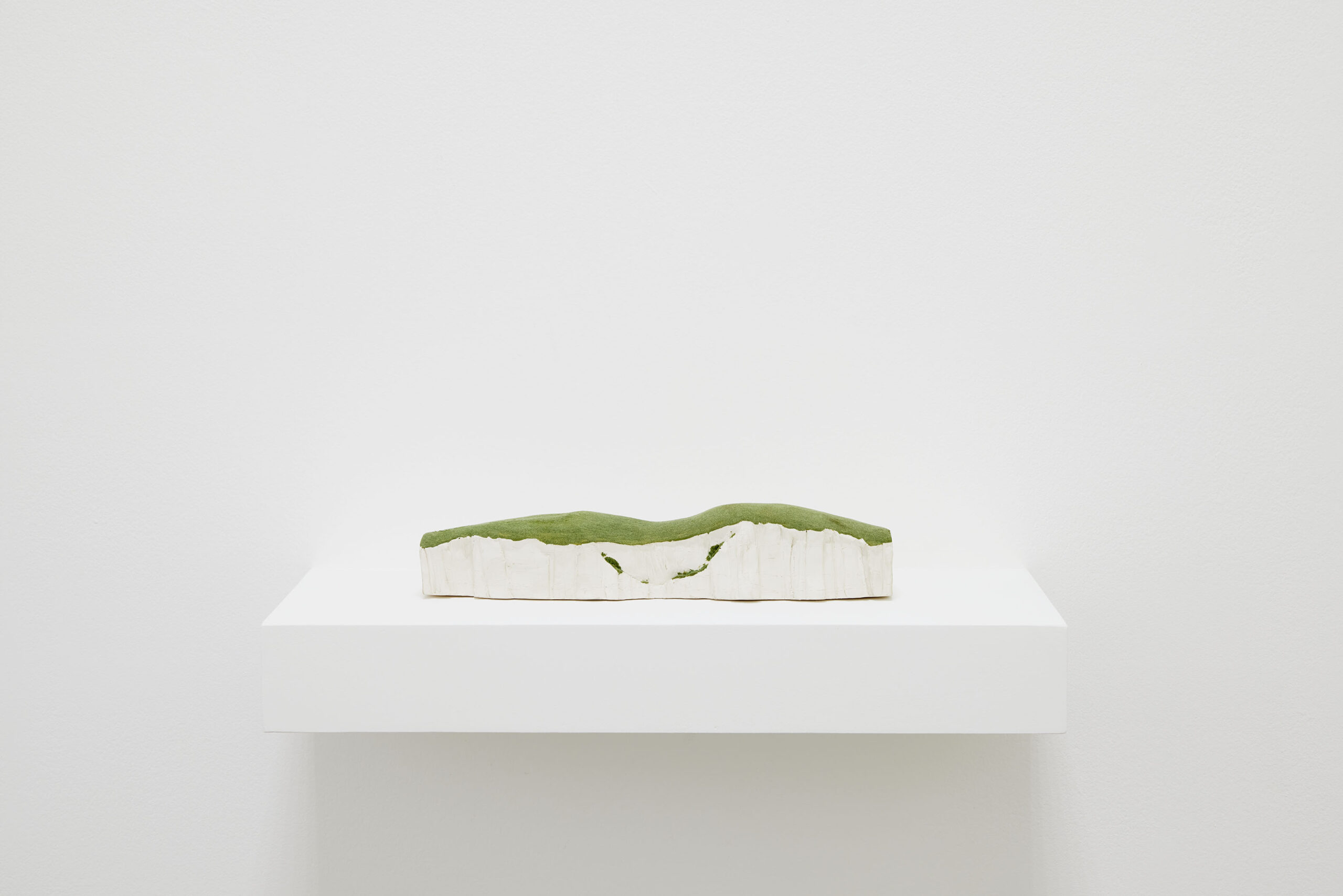
IKON THROUGH THE DECADES

